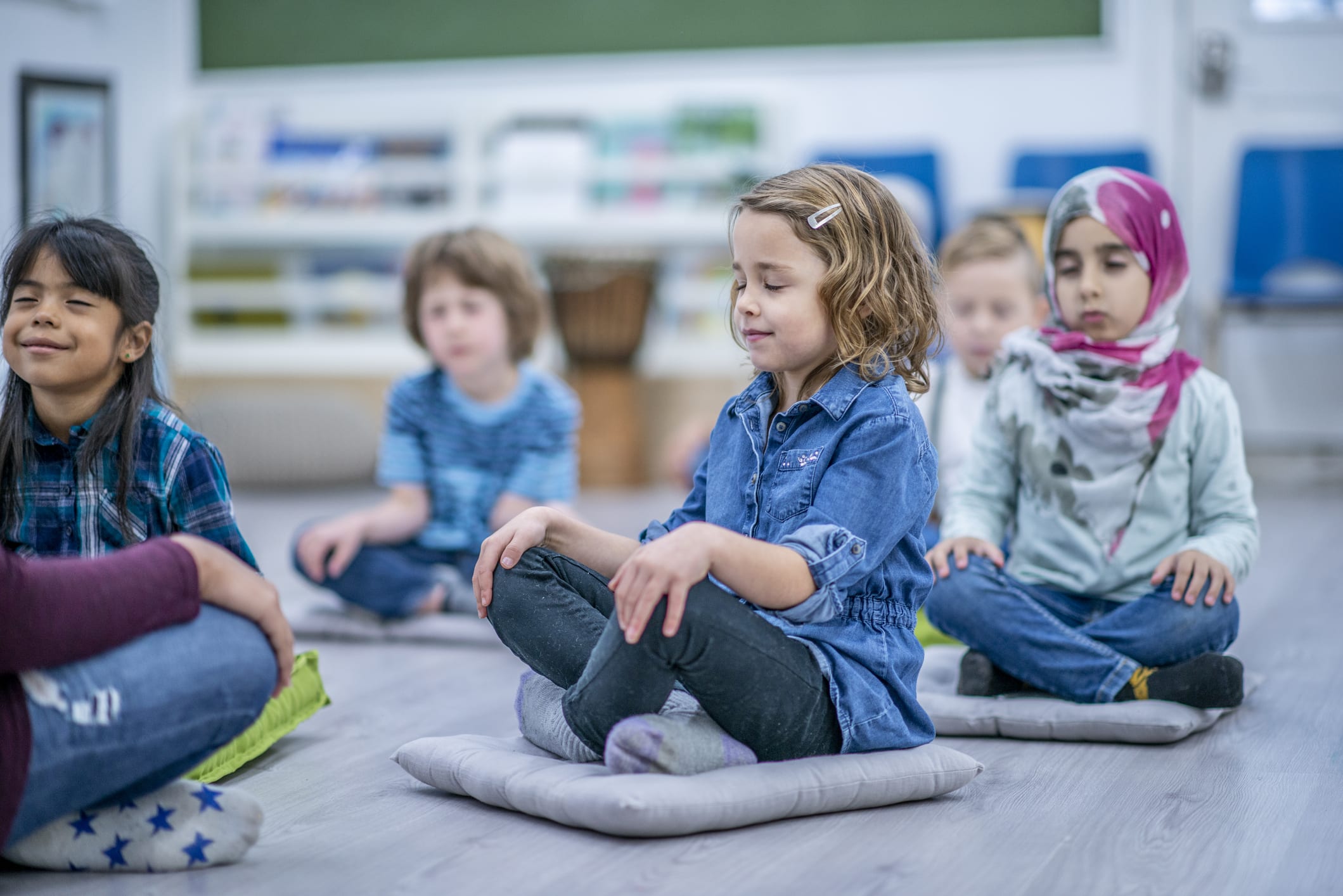With the average elementary class size of 20 students (National Center of Education Statistics), educators have to manage a room full of emotions day in and day out. They have to have a toolbox of social emotional learning (SEL) activities and strategies to use with students on the spot if and when a child is struggling emotionally.
Why Social Emotional Learning for Kids is Important
As educators, we know that a child’s behavior can change based on a variety of different circumstances. For example, some students can become sad, anxious, or angry because of an incident that happened on the playground, or because they are not grasping a concept being taught that day in the class. Some students may even become depressed or start crying, and they can’t even explain why. According to the National Institute of Mental Health, some of these behavioral changes are typical developmental phases, but some of these behaviors may indicate a more serious mental health problem so it’s important to track behavior. Even if a child has not been officially diagnosed with a mental health disorder, he or she can benefit tremendously from empathy-based mental health education and strategies to cope with their emotions which in effect will allow them to reach their full potential.
SEL Activities for Elementary School Students
Below are 5 different strategies educators can use in the elementary classroom that can help students when they are struggling emotionally.
1. Download a Mindfulness App
Mindfulness is a type of meditation in which you focus on being aware of what you are feeling in the moment and what you are sensing. Practicing mindfulness can help reduce stress by involving breathing methods and guided imagery to relax the body and mind. Downloading an age-appropriate mindfulness app on an IPAD in the classroom can be a great way for students to practice mindfulness and to calm down their emotions when feeling overwhelmed, stressed, or sad.
2. Teach “Balloon Breaths”
You may be thinking- What are Balloon Breaths?
The steps of a balloon breath include:
- Wiggle your shoulders and Sit up tall. Pop your hand on your belly.
- Imagine that your belly is a balloon. Take in a slow, deep breath and imagine filling up the balloon.
- Then exhale slowly, deflating the balloon in your belly.
Teaching Balloon Breaths is a fun way to teach students how your breath is actually a powerful tool that can have a positive effect on your mental well-being. Balloon breaths are also highlighted
3. Have Calming Visuals In Your Classroom
Sensory activities can help students calm down and can allow them to reach a more balanced state of mind. Have sensory bottles in your brain break corner for students to be able to use and play with. If you want to do a science experiment with your students, you could always make your own sensory glitter jar for your classroom. The visual aspect of looking at the glitter moving slowly within the bottle can allow students to regain control of their emotions and be able to make more rational decisions. You can also use the glitter bottle to be symbolic of our brains – when we are shaken up, it may take some time for us to feel leveled and respond in a more rational way.
4. Allow Movement Breaks
Physical activity can help reduce stress and can allow you to calm down. Having exercise options for students to get their anxiety or anger out can be very beneficial to certain
students. Here are some quick exercises and challenges students can do in the classroom:
- Exercise Ball Challenge: Bounce on an Exercise Ball for 2 minutes In Place
- Plank Challenge: Try and Hold a Plank for 1 Minute
- Yoga Challenge: Choose 3 Yoga Poses to Hold for 1 Minute Each
- Push-Up Challenge: Try and do 3 Sets of 10 Push-Ups!
5. Provide Art Therapy
Allow students to water paint! The benefits of art therapy include reducing feelings of stress, anxiety, and depression and can improve problem-solving skills. Having water paint as an option in a “take a break” corner can be a great addition to your classroom (and a side benefit of water painting is there would be minimal clean up!)
These quick, kid-friendly social emotional learning activities are ones you can have your students do in the classroom to improve their mental well-being. But, what can also benefit students is taking the time to really learn and teach what mental health is and identifying steps to build it. It’s important for students to understand there are ways that they can manage difficult emotions and to realize we all can have them. With this said, classroom discussions based on mental health can be extremely beneficial. Using EVERFI’s social emotional learning curriculum is a great avenue for teachers to enhance their mental health education in their classroom and is an excellent way to teach students foundational social-emotional skills.
Learn More About EVERFI’s K12 Health and Wellness Curriculum

Maria Fuccillo has 8+ years of experience as an elementary school teacher and math coordinator in the Washington, DC area.

